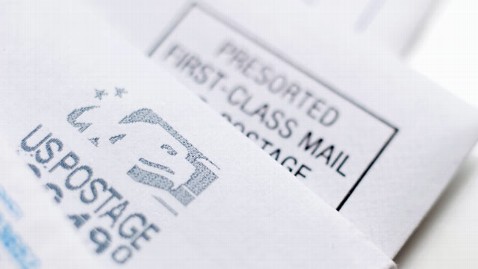50-Cent Stamp, Other Postal Changes Coming

The United States Postal Service may raise the price of first class postage to 50 cents.
The U.S. Post Office, facing financial losses of up to $18.2 billion a year by 2015, wants to charge more for postage, more for services, and to suspend Saturday delivery.
The 50-cent stamp would represent an 11 percent increase in postal rates.
USPS delivers 40 percent of the world's mail. Its revenues exceed $65 billion a year.
The service said last week that it lost $3.3 billion last quarter, and that it is forecasting a loss of $14.1 billion for the year ending Sept. 30. Such losses, said the Postal Service in a letter sent last week to Congress, would be "unsustainable" and would cause USPS to become "a burden" to the U.S. taxpayer. The letter called that outcome "highly undesirable."
Currently, USPS gets no taxpayer dollars for its operating expernses, which are funded by the sale of postage and postal services.
Suspending Saturday delivery would save $2.7 billion a year, the Postal Service says. Raising the cost of first-class postage to 50 cents would increase annual revenues by $1 billion.
The post office's chief financial officer said USPS is the least expensive major postal service in the world, and that its services are "clearly underpriced."
The last postal increase occurred late last month, when the cost of mailing a first-class letter rose from 44 cents to 45 cents. Rates also rose for packages, for periodicals, and for a wide variety of services. The law limits USPS increases overall to the rate or inflation, or 2.1 percent a year.
Before the January increase, USPS first-class rates held steady for two and a half years.
To raise revenue, the Postal Service has introduced new products. In 2012, they include Package Intercept: For $10.95 (plust Priority Mail postage), a customer can intercept and recall a package already sent before it reaches its destination.